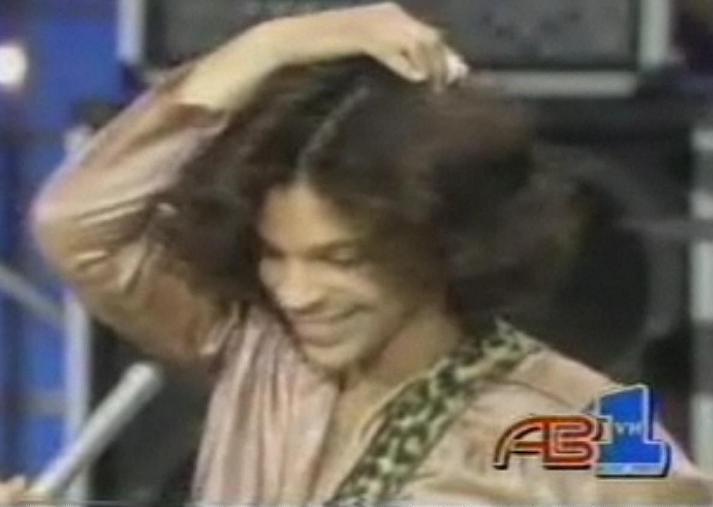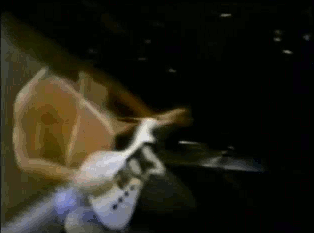
Matt, since you go further back with Prince, let's hear how you and he first got together.
Fink: Well, I began playing in bands when I was about 12. My broth-er – he’s three years old-er than I am – was play-ing in bands in junior high, and I got his hand-me-down Farfisa organ. We started doing junior high dances, bar mitz-vahs, weddings, the usu-al things. The nucleus of that band stayed together all the way through high school, with a few changes. When I was in my junior year of high school, I was already playing in nightclubs; I was too young, so I had to lie about my age. Sound typical?
Sounds like a pretty generic American Top 40 cover band expericence to us.
Fink Exactly. Then, when I was about 21, .". I went from the Minnesota bar scene right . into Prince. He was forming a band, and I ‘: auditioned for it because knew the drummer, ' Bobby Z. I called Bobby and asked if I could try out for the band, because they were advertising for musicians. I was interested, because Prince was the only local act at that : time that had been signed by Warner Bros.
Was he part of a different local scene in Minneapolis than you were?
Fink: At the same time I was playing in clubs around the Midwest, he was doing the same thing. Sut it was different, because he had an all-black group. In those days, things were still somewhat segregated here. I didn’t even know who Prince was until Bobby played me his demo tape late in '77. Then I said, 'Let me know when this guy’s ready to do something or when he gets signed, be-cause I'd like to meet him and get involved." That's how it came about. I got into the group in November '78.
Were the seeds of his style as people know it today apparent even in that demo tape,,
Fink: Yes, I would say so. If you listen to Prince's first album [For You], that's where he was musically on the demo tape.
What instruments were you playing then?
Fink: By the time I joined him, my peronal setup was just a Minimoog, a Rhodes, a Farfisa VIP 345 with a Leslie speaker cabinet, and a Freeman string synthesizer. At that same time, he had all this gear he bought with money from his record deal, so I integrated what I had with what he had. I got rid of the Freeman and went to an ARP String Ensemble, and the old Oberheim Four-Voices and S.E.M. modules. I kept the Minimoog, and added a [Hohner] Clavinet and an ARP Pro-Soloist... a lot of stuff! It was a Rick Wakeman kind of setup. Then, as time went on, I pared things down, and every year kept updating as things changed.
Clearly, Matt, you’ve had some formal training
Fink: I had jazz teachers over the years. I did have some musical training in public school, but l didn't go to college. When I was about 14, I began studying jazz with a local teacher, Tom Weekend. I said, "I want you : to teach me how to play rock organ." He kind of laughed at me and said, "I don't do that. I teach jazz. ‘But we'll start you out on Hammond 8-3." I did that for a while, then I Just with piano because that was my main instrument; I had had six or seven years of classical training up to that point.
Describe your audition for the gig with Prince.
Fink At that time, his first albumhad been out about three months. He had gotten everyone he needed for the band except for one more keyboard player.
Is it true that Jimmy Jam auditioned for the job?
Fink: I believe he did, amongst about ten other guys. There was another guy who had actually been hired, but he became impatient because nothing was realty happening, so he left to work with someone else. When that slot opened up, I had my window of opportunity. I went in, and the first thing Prince said to me was, "So tell me. Did you learn the song 'So Blue'?" That was on the first album. I said, "No,'. I didn't. Oh, God!" Then he laughed and said, "Don't worry about it. There's no keyboards on that one." So he played a joke on me, just to break the ice, Then we started jaming on stuff. l had brought my Minimoog along. It was my solo instrument at the time, and I could do quite well with it He didn't have one, so that impressed him quite a bit.
Were you trying to show off your chops or to find a way of discreetly backing him up?
Fink: At first, I was showing off my chops. Then we played "Soft and Wet," the single at the time; I had tried to cop as much as I could from the record, but there was a Clavinet part in the song that was mixed so far back in the track that it was wally difficult to get the rhythm. I did what I thought was the part, and he looked at me and said, 'well, that's linda close." l said, 'V/hy don't you just show me what it isf l can't hear it in the mix." He came over and showed me the part for about five minutes. And I copped it. I was the only guy who did up to that point.
Why? What was so hard about that part?
Fink: It was a very tricky rhythm. The voicings that he used were interesting too. He has a great knowledge of voicings. He told me, "Play the part as'big as 'you can, with both hands."
What did he mean by "big'?
Fink: For the most part, if there are horn punches or something like that, he’ll want you to play with as wide a range as you can, to make it sound full. That means to play every note you possibly can with-out making it sound bad [laughs]. So if you were playing, like, a minor 7(9) chord, he'd want you to throw the fourth in there. If you were playing a Cm9, your left hand would start on the g„ then you'd have the F, the G, the g, the C, and then the D up on top. The right hand would be playing the same thing, only with the C on top.
That’s where your jazz background proved helpful.
Fink: Yeah, it really came in handy for me.
It also probably depends on the sounds you're using.
Fink: Anyway, I kept coming back for about three weeks white he was trying to figure out who he wanted. A lot of it had to do with looks, too. There could have been some cats who played their butts off, but they didn’t look right for the band.
So how did you look?
Fink: I was pretty rocked out. That's what he wanted. And he wanted an integrated band. The original group had thee black guys up front and three white people in the back a drummer, a keyboard player, and a female. He was trying to break the color barriers that were in place at the time.
In the early days, we were all groping for images of how we wanted to look onstage. Prince pretty much left it up to each individual member of the band to figure it out – of course, with his final approval. I’ll never forget the first videos we did. I hadn’t been able to come up with anything he liked, so he hand-ed me a kind of khaki paratrooper jump suit real Army issue. Then I found some real weird space-age sunglasses. That was my image for the first video. Then I rented a gold satin tails-type tuxedo with black lapels and wore that with no shirt underneath for the next video. The next thing we did was American Bandstand our first television appearance. Our bass player, Andre Cymone, who has gone on to produce Jody Whatley and a lot of other people, wore clear plastic pants with red underwear, red suspenders, and a black tank top. He was in them for so long that they steamed up with condensed sweat. I wore a black and white striped jail outfit. And Prince was wearing dancer's knee-high stockings with boots.
 Report post to moderator
Report post to moderator Report post to moderator
Report post to moderator Report post to moderator
Report post to moderator Report post to moderator
Report post to moderator Report post to moderator
Report post to moderator Report post to moderator
Report post to moderator Report post to moderator
Report post to moderator New topic
New topic Printable
Printable






